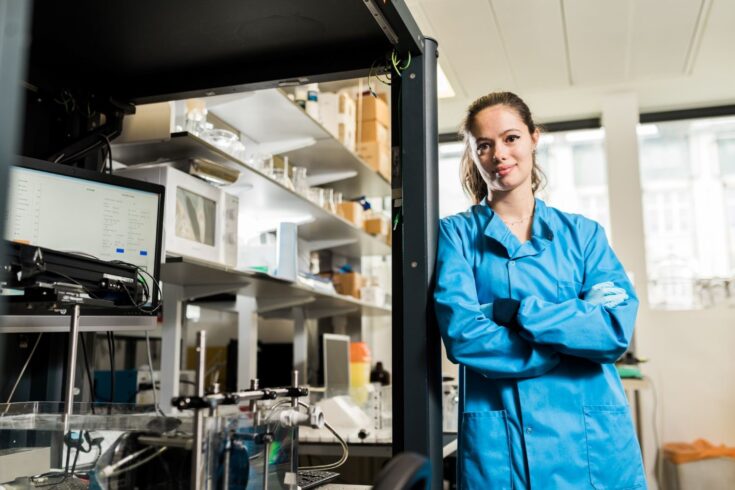The brain is the only organ in our body that has its own security system: the blood-brain barrier. This barrier keeps harmful substances out by controlling what enters and exits our brain. Unfortunately, this barrier also prevents over 98% of drugs from entering, including those that could potentially treat currently incurable brain diseases such as Alzheimer’s and Parkinson’s disease. There is a method, however, that allows drugs to be non-invasively and locally delivered to the brain. This method involves sound and bubbles.
During my PhD, which was supported by the Engineering and Physical Sciences Research Council (EPSRC) Centre for Doctoral Training (CDT) in Medical Imaging, I investigated the above method. I looked at how ultrasound, in combination with microbubbles, can deliver drugs to the brain effectively and safely. This technique involves focusing ultrasound waves onto specific parts of the brain and then injecting very small bubbles, microbubbles, into the bloodstream. When the bubbles reach the region where the ultrasound is focused, they oscillate with the sound waves and open the blood-brain barrier. This allows drugs to enter the brain.
The CDT experience
During my PhD, I had the fantastic opportunity to present my work at the STEM for Britain event in the UK Parliament and ended up winning not only the Gold Medal in Engineering but also the Westminster Medal as overall winner. Since then, my work has been recognised by the Institute of Engineering and Technology William James Award, Young Investigator Awards from the British and the European Ultrasound Societies and with the Top 50 Women in Engineering Award.
Being part of a CDT during my PhD was a fantastic experience. Doing a master’s all together during the first year helped us bond as a group. It allowed us to share the difficulties of doing a PhD and helped us all realise how different PhD experiences can be in an interdisciplinary field such as that of medical imaging. We even ended up organising several holidays all together.
By the end of my PhD, I had secured an EPSRC doctoral prize fellowship, which is a unique opportunity to spend a year working on something new but still related in some ways to your PhD work. I really enjoyed this year. It allowed me to gain independence. I started working on my own ideas and developing new and exciting collaborations, which has been key to form the basis of my current research.
Life after a PhD
My current research focuses on developing a non-invasive ultrasound technology to stimulate the immune cells of our brain. This technology holds potential as a novel and safe approach to delay the onset and restore cognition in those with neurodegenerative conditions. Alzheimer’s disease is an example of a disease where the function of our brain’s immune cells is altered. My work is supported by the EPSRC and the Medical Research Council funded NeuroMod+ Network, the Royal Society, Alzheimer’s Research UK and Imperial College London.
Brainstorming, researching and planning
Challenges? Plenty. As I finished my PhD, I found the fact that I needed to come up with my own research ideas very scary. In the end, I had to force myself to find the time to sit down and brainstorm. I wrote down the craziest ideas I could think of and then slowly, slowly looked up whether they had already been done or not. This whole process was actually a lot of fun and is still one of the things I find the most rewarding in my current job as a group leader and research fellow.
I also have to say that I found the whole transition from being in the lab to “now you need to be writing grants and fellowship proposals” rather difficult. Nobody had taught me how to write grants. Maybe I found it all harder as I was educated outside the UK, in Italy, but on the other hand, most of us engineers and scientists don’t go into science because we are really good writers. In any case, I learnt how to write better by doing lots of writing and rewriting, and thanks to the feedback and criticism from mentors and peers.
What’s next?
In the future, I aim to develop non-invasive technologies to help delay the onset of diseases within and outside of the brain. In terms of my career, the next step is to secure a lectureship position and grow my research team further to develop a non-invasive ultrasound technology to delay the onset of Alzheimer’s disease – our first challenge.
Find out more
You can find out more about my research on the following pages:



